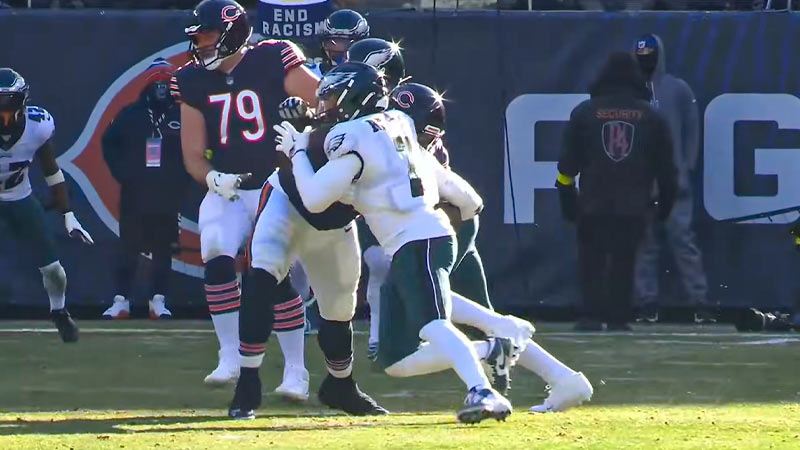In the exhilarating world of football, few moments hold as much potential to alter the course of a game as a change of possession. This pivotal shift from one team to another can occur through various means, each carrying its own set of implications and strategic considerations.
Whether you’re a die-hard fan or a casual observer, grasping the nuances of football change of possession is essential for comprehending the ebb and flow of the game.
In this blog post, we delve into the frequently asked questions surrounding this dynamic aspect of football, shedding light on turnovers, punts, kickoffs, and their influence on the outcome of matches. So, stay focused.
What Is Football Change Of Possession?
A football change of possession refers to the shift in control of the ball from one team to another during a game. This transition can occur in several ways, including turnovers, missed field goals, punts, and kickoffs.
Turnovers happen when the defending team intercepts a pass or recovers a fumble from the opponent. Missed field goals, and unsuccessful attempts to kick the ball through the goalposts, result in the opposing team gaining possession at the spot of the attempt.
Punts and kickoffs involve the relinquishing team kicking the ball downfield to the receiving team, initiating their offensive possession. These changes of possession are pivotal moments that greatly impact the flow and outcome of the game.
When Does the Change Of Possession Happen?
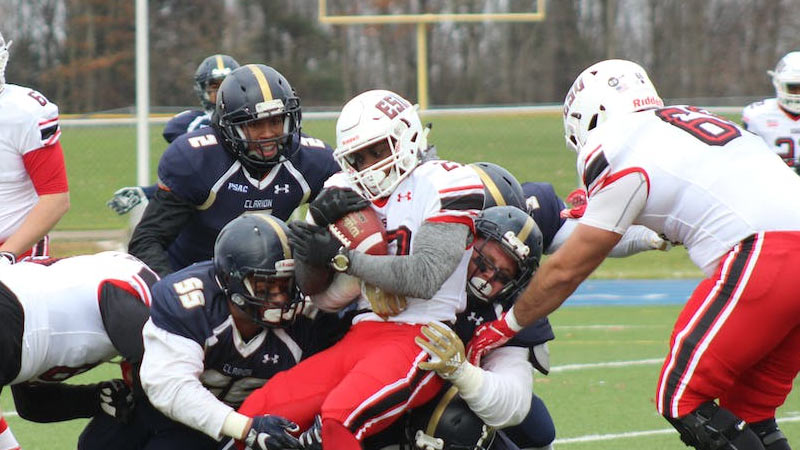
A change of possession in football happens at specific points during the game based on the various scenarios outlined earlier. Here’s when a change of possession occurs in each of those scenarios:
Turnovers
A change of possession due to a turnover occurs as soon as the opposing team gains control of the football. This could be when an interception is made by a defensive player or when a fumble recovery is completed by a member of the opposing team.
The change of possession is immediate, and the new offensive team takes over at the spot where the turnover was completed.
Missed Field Goals
If a team attempts a field goal and the kick is unsuccessful (missed), the opposing team gains possession of the football at the spot where the ball was snapped for the kick attempt. This change of possession happens immediately after the missed field goal.
Punts
When an offensive team is unable to advance the ball and decides to punt, the change of possession occurs once the punt is caught by a member of the receiving team or when the ball stops rolling. The receiving team then takes over on offense at the spot where the ball is caught or where it stops.
Kickoffs
At the start of each half, after scoring plays, and following halftime, the team without possession kicks the ball off to the receiving team. The change of possession occurs once the ball is kicked and has been legally touched by a player from either team.
The receiving team then becomes the offensive team and starts their possession from the spot where the ball was received.
In all these scenarios, the change of possession is a pivotal moment in the game that can greatly impact the flow and outcome of the match.
Turnover in Change Of Possession
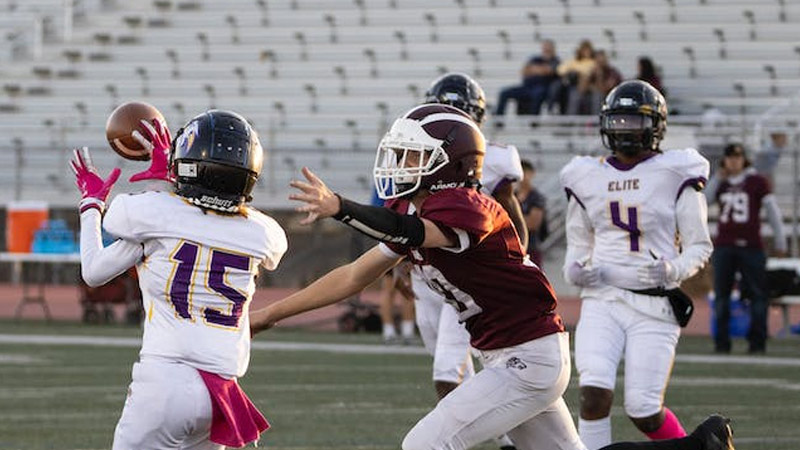
A turnover in football is a significant event that results in a change of possession from one team to another. It occurs when the defensive team successfully seizes the ball from the offensive team through various means. There are several types of turnovers:
Interception
An interception happens when a defensive player catches a pass thrown by the quarterback intended for a receiver on the offensive team. The defensive player gains control of the ball, and their team now becomes the offensive unit.
Fumble Recovery
A fumble occurs when a player holding the ball loses control of it, typically due to being tackled or encountering contact. If a defensive player manages to recover the loose ball before it goes out of bounds, possession changes to their team.
Muffed Punt or Kickoff Recovery
If the receiving team fails to securely catch a punt or kickoff and the ball touches the ground, it becomes a live ball. If the kicking team recovers it, they gain possession.
Turnover on Downs
When the offensive team fails to advance the ball the required distance in four downs (plays), the opposing team takes over from the spot where the previous team’s drive ended.
Fumble Return for a Touchdown
If a defensive player recovers a fumble and advances it into the end zone, they score a defensive touchdown. This is a unique turnover situation.
Turnovers can swing the momentum of a game, often resulting in sudden shifts in field position and scoring opportunities. Defensive strategies often focus on creating turnovers as they provide their team with advantageous starting positions and potential scoring chances.
Punts and Kickoffs in Change Of Possession
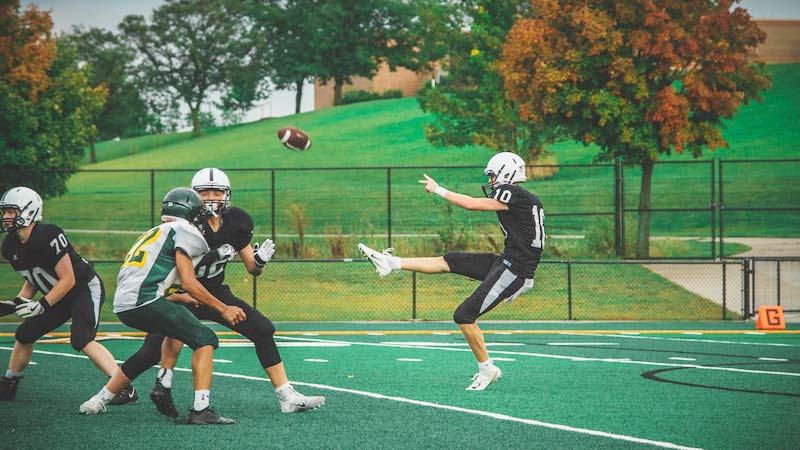
Punts and kickoffs are essential aspects of football that contribute to changing possession during a game.
Both involve a team relinquishing control of the ball by kicking it to the opposing team, who then starts their offensive drive. Here’s an elaboration on punts and kickoffs:
Punts
A punt occurs when the offensive team decides to kick the ball downfield on fourth down instead of attempting to gain the necessary yardage for a first down. The punter, a specialized player, kicks the ball as far as possible to ensure the opposing team has to cover a longer distance to reach the end zone.
The receiving team’s main goal is to catch the punt and gain as many yards as possible on the return, ultimately setting up a favorable field position for their offensive drive.
Kickoffs
Kickoffs happen at the beginning of each half, after a score, and following a change of possession, such as after a touchdown or a field goal. The kicking team places the ball on a tee at their own 35-yard line and kicks it downfield to the receiving team.
The receiving team’s returner catches the ball and attempts to advance it as far as possible up the field. The point of origin for the receiving team’s drive is where the returner is tackled or where the ball goes out of bounds.
Both punts and kickoffs are strategic elements of the game. The kicking team aims to execute accurate and well-placed kicks to minimize the return yardage and maximize the distance the receiving team must cover.
The receiving team focuses on setting up blocks and gaining valuable yardage to begin their offensive series in a favorable position.
Strategies for Mastering Change of Possession
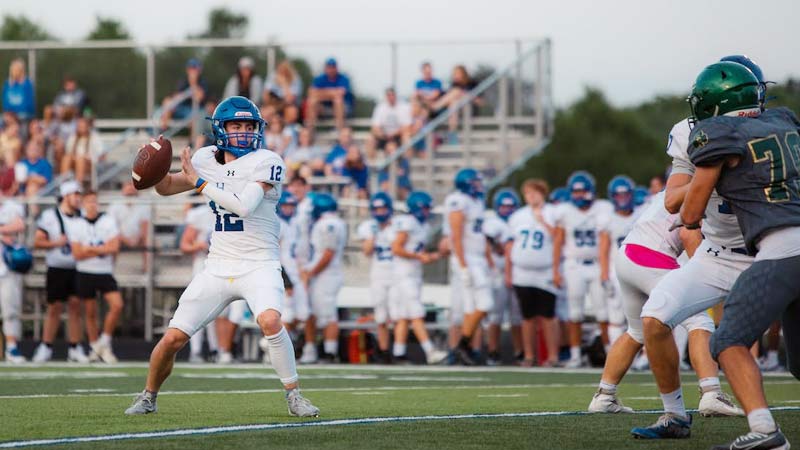
Mastering the change of possession in football requires a combination of strategic planning, skill execution, and adaptability. Here are some key strategies to excel in handling turnovers, punts, and kickoffs:
Turnovers
- Defensive Training: Focus on creating turnovers through interception and forced fumbles. Train defenders to read the opposing team’s plays, anticipate passes, and disrupt ball carriers.
- Tackling Fundamentals: Emphasize proper tackling techniques to increase the chances of causing fumbles while minimizing missed tackles.
- Ball Security: On offense, teach ball carriers to secure the ball with both arms and utilize proper ball-carrying techniques to reduce fumbling.
Punts
- Effective Punting: Train punters to consistently kick the ball high and deep, making it challenging for the return team to gain significant yardage.
- Coverage Team: Emphasize the importance of punt coverage, with players quickly converging on the returner to limit yardage gained after the catch.
- Pinning Opponents: Encourage punters to angle their kicks toward the sideline, increasing the chances of pinning the opposing team deep into their own territory.
Kickoffs
- Kick Placement: Work with kickoff specialists to place the ball strategically, aiming for areas that make it difficult for the returner to exploit gaps in coverage.
- Kick Coverage: Train the kickoff coverage team to stay disciplined, maintain their lanes, and close in on the returner effectively to prevent long returns.
- Surprise Elements: Consider mixing in surprise onside kicks or directional kicks to catch the receiving team off guard and potentially regain possession.
Adaptability
- In-Game Adjustments: Coaches and players should be prepared to adjust strategies based on game situations, opponent tendencies, and field conditions.
- Quick Decision-Making: Players should make split-second decisions during turnovers or returns, considering whether to secure the ball, advance it, or down it.
Scouting and Analysis
- Opponent Study: Analyze opponents’ tendencies in handling turnovers, punts, and kickoffs to exploit weaknesses and anticipate their reactions.
- Situational Awareness: Develop a strong sense of situational awareness, such as knowing when to fair catch, when to return a kickoff, or when to let the ball go out of bounds.
Communication
- Special Teams Coordination: Ensure clear communication among all players involved in special teams, including kickers, returners, blockers, and coverage players.
- Sideline Support: Coaches and players on the sideline should communicate real-time information about the opponent’s approach and field conditions.
Mastering change of possession scenarios requires a combination of technical skill, tactical understanding, and teamwork.
FAQs
What Exactly is a Change of Possession in Football?
A change of possession refers to the transition of control of the football from one team to the other during a game. This momentous shift can stem from turnovers, missed field goals, punts, and kickoffs, all of which play crucial roles in shaping the game’s progression.
How Do Turnovers Impact the Game?
Turnovers are game-changing events where the defensive team successfully seizes the ball from the offense. They occur through interceptions (catching a pass intended for the offense) and fumble recoveries (recovering a loose ball from a ball carrier).
Turnovers can drastically alter field position and momentum, providing the seizing team with valuable opportunities to score.
What’s the Significance of Punts in Change of Possession?
Punts occur on fourth down when the offense decides to kick the ball downfield instead of risking losing possession by failing to convert.
This strategic play involves the punter kicking the ball deep to minimize the opposing team’s advantageous starting field position, setting the stage for a defensive stand.
How Do Kickoffs Affect Possession Change?
Kickoffs mark the beginning of halves, after scores, and following turnovers. The kicking team initiates the play by sending the ball downfield to the receiving team.
Kickoff returns involve the receiving team’s attempt to advance the ball as far as possible. A successful kickoff can lead to a favorable field position for the offensive drive.
Can Special Teams Make a Difference in Change of Possession?
Absolutely. Special teams, including kickers, returners, and coverage players, play a vital role in executing successful punts, kickoffs, and returns.
Well-coordinated special teams units can provide a significant advantage, affecting field position, momentum, and potential scoring opportunities.
Wrapping Up
In the intricate tapestry of football, change of possession moments serve as dramatic turning points that can shape the game’s trajectory.
Whether it’s the thrill of a turnover sparking an offensive surge or the art of strategic punts and kickoffs influencing field position battles, understanding these dynamics enriches our appreciation of the sport’s strategy and excitement.
As we’ve explored the key FAQs surrounding football change of possession, it’s clear that these moments aren’t just transitions—they’re critical junctures that can tip the balance of victory. Thank you for your support.

